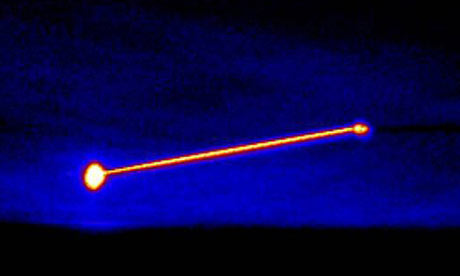
The airborne laser test-bed (ALTB) uses more than one laser to bring down a missile. When infrared sensors on the plane detect a missile's exhaust plume, the first laser is used to track its trajectory. A second laser is then used to measure atmospheric effects between the plane and the missile.
These are fed into a computer that adjusts the optics of the main laser. The giant 18 tonne infrared laser then fires a single shot from the nose turret on the plane, lasting three to five seconds, which is targeted at the pressurised part of the missile. The intense concentration of heat on the missile's skin weakens it enough for aerodynamic stresses to tear the missile apart. The whole process takes less than 12 seconds.
The main laser, a powerful $4bn (£2.55bn) chemical oxygen iodine laser, can fire 20 shots before the plane needs to land and fill up on fuel for the weapon. If it is used at lower power, it could muster 40 shots in one flight. Although the airborne laser was designed to destroy short-range tactical missiles, defence analysts believe it may be effective against intercontinental ballistic missiles, hostile aircraft and even satellites.
The lasers and missile detection sensors are built into a modified Boeing 747 freighter plane that cruises at an altitude of 40,000 feet and has a kill range of around 190 miles. The plane would be deployed over war zones or missile silos and fly in a figure of eight overhead to act as a deterrent.
The airborne laser is a big part of the US missile defence agency's reincarnation of the strategic defence initiative, a constellation of laser-toting satellites proposed by the Reagan administration in the 1980s. That project hit insurmountable technical difficulties with putting powerful lasers in orbit and being able to track missiles quickly and accurately.
See more here







0 comentários:
Postar um comentário